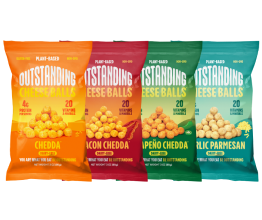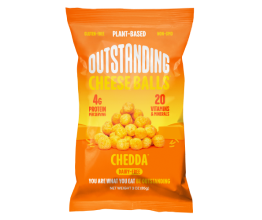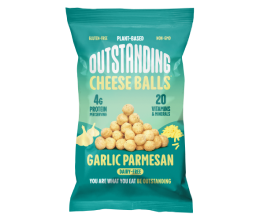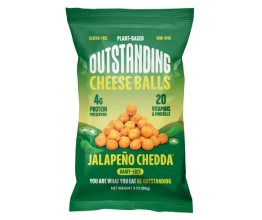The 5 Food Groups: How To Eat a Balanced Diet
We all remember that project in third grade, where we had to cut out pictures of food from various magazines and glue them on large triangles of construction paper. What were we making? The food pyramid!
While the food groups, serving sizes, and proportions have changed slightly throughout the years, the point of the food pyramid and similar diagrams have remained the same: To act as a simple guide for getting all the nutrients you need through a balanced diet. With so many fad diets around these days, what does the standard balanced diet actually look like? Let’s talk it out!
What Is “Well Balanced?”
Ever since we were little kids, we’ve been told to eat all of our dinner or else we wouldn’t grow up to be big and strong. Now that we’re all grown up, what’s next?
Eating a balanced diet means so much more than just eating three meals a day and cleaning our plates. It means eating the appropriate amount of servings from each food group every single day.
You’ll notice as you go through this list that we haven’t included what used to be the top layer of the food pyramid—the one that included things like chocolate, cakes, and soft drinks. And while we’re not saying that you can’t fit those treats into your dietary guidelines, they’re not really a necessary part of a balanced diet, so we’re not chatting about them today.
With so many people relying on fast food and unhealthy choices, it is time we get back to basics and talk about the variety of nutritious foods we should really be eating. Dietary needs will always vary from person to person, but let’s take a look at the main food groups.
Vegetables
Oh, veggies. How do we love thee? Let us count the ways.
Vegetables are a vegan’s bread and butter, so to speak. Most of the food we consume is somehow derived from vegetables and vegetable oils, but how much should we really eat in a day?
It is recommended that half of your plate for each meal be filled with whole fruits and veggies. Since we rely on plant-based products for protein, it can get confusing as far as what category certain vegetables fall into. Here are some examples:
- Veggie burger patty = Protein
- Sweet potato = Vegetable
- Black beans = Vegetable or Protein (Oooh, flexibility! We like it!)
- Russet potato = Vegetable
- Carrots = Vegetable
- Broccoli = Vegetable
- Celery = Vegetable
Taste the Rainbow (But Make It Healthy)
When loading your grocery cart up each week, keep in mind the color of the food you’re selecting. Have you ever heard the phrase, “Eat the rainbow?” No, we’re not talking about candy. We’re talking about the variety of food on your plate! Try to select veggies in every color possible, as they all provide different health benefits.
We all know that dark green vegetables like kale and spinach are jam-packed full of B vitamins and that red fruits and veggies, like tomatoes, are a great source of lycopene and antioxidants, but different colored veggies can offer different benefits. Orange vegetables like pumpkins contain hella vitamin A, and the deep purple of eggplant hits you with a chunk of potassium that can’t be overlooked.
Keep that plate colorful, and you are guaranteed to give your daily multivitamin a run for its money!
Fruit
Fruit is so versatile in a vegan diet. We love to use fruit for breakfast, a snack, and even for dessert! Many fruits (and especially fruit juices) have a high sugar content, so how much should we really be eating? Remember, we should aim to fill half of our plates for each meal with a mix of fruits and veggies (Lean in a little harder on the veggies than the fruit, okay?).
Of course, fruits can help satisfy a sweet tooth, but what’s really sweet are their health benefits. Eating a variety of fruits each day can really up your nutrition game. It’s super easy to reach for a candy bar when that sugar craving hits, but consider reaching for something a bit more nutritional. Some of our favorite fruits are:
- Apricots: People tend to overlook these bad boys, but their tart flavor is a total win.
- Banana: Coming in clutch with their well-known potassium (an electrolyte) content. (These bad boys are Mother Nature’s version of a sports drink!)
- Kiwi: Did you know that they are a classic provider of good ol’ vitamin C? (They provide even more than oranges! Whaaat?!)
- Plums: These poppin’ purple fruits have plenty of magnesium and vitamin K to go around.
- Raisins: That’s right, dried fruit is getting in on the action, too. These little fruits are full of iron and potassium.
- Pears: These puppies are full of vitamin C, and they pack in some delish flavor, too.
- Grapes: Okay, so grapes might be the Skittles of the fruit world due to their high sugar content, but they’re high in antioxidants and vitamins, too.
If you're getting bored with your fruit, blend up a fruit smoothie or try heating up your favorite nut butter in the microwave and drizzling it over a sliced apple or fresh strawberries. You can also whip some coconut milk into whipped cream and dip your favorite berries or some sliced mango in it. No cap, these desserts promise to hit different.
Protein
Okay, this is a touchy subject for many vegans. We all have that Aunt Edna that just “doesn’t understand” our lifestyle because how could we “possibly get enough protein without eating meat?” Insert eye roll here.
Not only do we have many man-made vegan options nowadays (thanks, man!), but there are plenty of plant-based, meat-free sources of protein that always seem to get overlooked. It’s not all beef, pork, and poultry in the protein world, kiddos. Depending on things like your age and sex, adults are going to want to include between five and seven ounces, or servings, of protein in their diet per day.
Your Vegan Protein Options
Some good sources of protein to try are:
- Lentils
- Chickpeas
- Beans (Pick your favorite because pretty much any variety is a great source of protein.)
- Hempseed
- Quinoa
- Green peas (Who knew?!)
- Chia seeds
We also love some pre-made protein powerhouses like:
- Seitan
- Tofu
- Sprouted grain breads
- Nutritional yeast (often used as a cheese substitute)
- Various nut butters
Where would modern vegans be without the mighty veggie burger? We don’t know either, and thankfully we don’t have to figure it out!
Pump the Protein in Your Snacks
With so many amazing, vegan-focused companies these days, we have plenty of plant-based protein foods to keep things fresh. You can say sayonara to salmon and hasta la vista to ham, because vegan options are ready to rock your world. Veggie burgers, faux chicken nuggets, the immaculate veggie corn dog, even snack puffs? That’s right, puffs!
Outstanding Foods has blessed us all with their protein-packed Snack Puffs! These little beauties contain 21g of protein per bag. 21g! They are also full of 20 vitamins and minerals and have only 130 calories per serving. Outstanding Puffs come in four awesome flavors and will leave even your meat-eating friends jealous.
At the end of the day, the amount of protein we get is super important. And as vegans, it is our personal burden to make sure we prove all of the naysayers wrong. Do we got this? Hell yeah, we do.
Grains
Mmm carbs. We mean, grains. Ahem, grains. The mighty carb gets a bad rap sometimes, but when healthy choices are made, they can be an integral part of a well-balanced diet. Depending on your stats, you want to keep your daily intake between three and five servings a day.
When you’re hitting the grocery store, search for things like wholegrain and whole-wheat. You’ll want to make at least half of your daily grain servings whole grain. Grains help provide us with fiber, various B vitamins like riboflavin, folic acid, niacin, and thiamin, and minerals such as iron and magnesium.
Some people like to switch out carb-heavy vegetables like potatoes for a serving of grains. This is a commonly accepted method of creating a well-balanced diet, but don’t discount the energy and vitamins quality grains like barley can provide you with. You can’t go wrong selecting whole grain or whole wheat versions of:
- Ancient grain bread
- Oatmeal (try to avoid the highly processed, artificially flavored varieties)
- Bulgur
- Breakfast cereals (think bran flakes, certain granolas, and healthy Os)
- Brown rice
- Premade tortillas, wraps, and taco shells
- Whole wheat pasta (both refrigerated and dried)
Dairy
Welp, let’s rename this category: Dairy Substitutes. Even the USDA recognizes that some vegan dairy substitutes are suitable to fulfill one's need in this category, and you are looking to get about three cups daily.
The goal of that low-fat milk your mom wanted you to drink in a balanced diet is to provide things like calcium and vitamins A and C. Fortified soy milk and soy yogurt are a good option, while some more commonly used nut milks don’t qualify. Your go-to oak milk may be high in protein and make your favorite cereal slap, but it doesn’t quite hit the mark for this category of nutritional support.
Sure, some of the dairy milk alternatives actually contain higher calcium per serving, but the rest of the nutritional value just doesn’t do it. As always, just read your food labels and pay attention to what you’re getting into.
Wrap Up
Eating a balanced diet may sound tough, but if you’re a vegan, you have a leg up on everyone else already. With so many people transitioning to a plant-based diet for health reasons, you may be meeting these balanced diet checkpoints without even realizing it.
Don’t be afraid to try new things and really get creative. You can also count on our team here at Outstanding Foods to help shake things up a bit. Eating healthy doesn’t have to be boring, and being a vegan doesn’t have to be hard. With a little effort, you can have a balanced diet and still enjoy eating. (Hello, Puffs, remember?) When in doubt, just bust your pyramid out.
Sources:
What is MyPlate? | myplate.gov
Kiwi Benefits: Asthma, Digestion, Vision Loss, and More | Healthline








